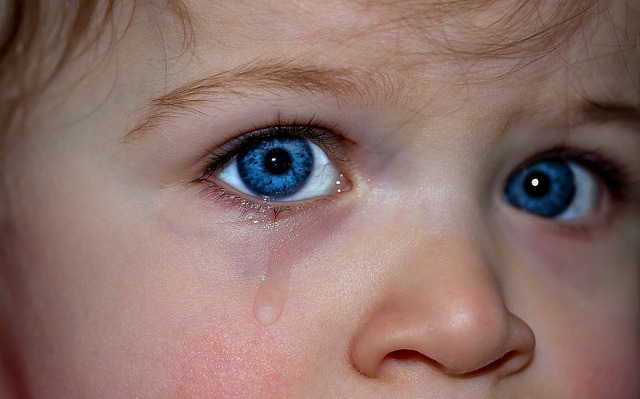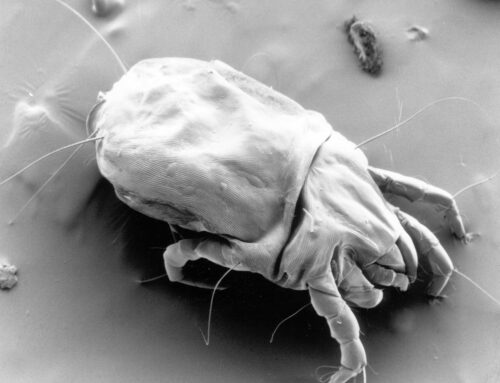Table of Contents
It never crossed my mind that the excessive blinking suffered by my child was one of the symptoms of dust mite allergy. Initially, I suspected it was a tic, which is caused by an uncontrollable spasm of the muscles that may result in excessive blinking.
After getting a consultation from an eye specialist, it was clear that he suffered from some sort of allergy that affected his eye. Now, as I dig deeper into the cause of eye allergies online, I was brought to the attention of dust and pollens.
Living in a high rise building and with no plants in the house, that rules out pollens as the cause of the allergies and I have to suspect it has something to do with dust. I started to close all the windows and doors of my home, hoping to keep air pollutants away.
I’ve never suspected that the allergies are caused by dust mites from my home. But as my child’s symptoms got worse by the following weeks, I knew it is unlikely from any pollutants out of my home.
Common Dust Mite Allergy Symptoms
While I am less sensitive to dust mites, my son develops allergy symptoms that are persistent. With that said, anyone can be allergic to dust mites, regardless of their age and gender. If you, your child or any toddlers in your home are showing one or more of these symptoms, it could a sign of dust mite allergies.
1. Red, Itchy or Watery Eyes

This is one of the first symptoms of my child that first caught my attention. Initially, it was the occasional blinking that seems forced. You would brush it off too when it happens like once every 20-30 minutes.
But when the blinking didn’t stop, and the frequency increases, you’ll suspect that if there’s anything wrong with the eye itself. A closer look at the eye that is suffering from an allergy will show redness, especially along the vein.
Besides getting red eyes, you’ll also find your eyes watery and itchy at times from the dust mites. While I didn’t develop other excessive symptoms, I do suffer this to a certain extent.
2. Itchy Throat
As my child’s excessive blinking got worse, he started to make a weird sound as if he’s clearing his throat. Worried about an impending sore throat and fever, I made some honey lemon concoction, hoping to soothe his throat.
Apparently, my child’s discomfort has nothing to do with a sore throat. Instead, having an itchy throat is another symptom of dust mites allergy. (His throat discomfort only subsides after taking Claratyne prescribed by the pediatrician.)
3. A Runny Nose
The next symptom that besiege my child is a runny nose. I was confused as I thought it was caused by the seasonal flu. But when there were no signs of fever, as that usually precede a runny nose in a case of seasonal flu.
4. Nasal Congestion

I’ve never dealt with dust mites allergies, as I’m pretty resistant to pollutants in the air. But when my child starts complaining that he has difficulty breathing, I hit the panic button. It’s not as simple as a matter of excessive blinking anymore.
I turned on the flashlight and take a good view of the inside of his nose. I was shocked at the sight of an engorged nasal pathway that makes it hard to breathe in air. I tried some of the basic remedies for nasal congestions, like inhaling hot vapor, but with little effect.
After getting him inspected by a pediatrician, I was told that my child suffered from allergic rhinitis. Being oblivious to medical terms, I probed the pediatrician for what it really means. I was told that it is a form of allergic caused by allergens in the air.
When we’re exposed to allergens, our body produces a type of chemical named histamine, to protect our body from the allergens. Some individuals may have severe reactions to allergens while others barely developed any symptoms.
5. Sneezing
You would have thought that the symptoms of dust mite allergies stop with nasal congestion. Well, it doesn’t. A series of other symptoms soon followed and sneezing was one. It wasn’t frequent, but at certain intervals, my child would sneeze. At times, the mucus from a runny nose got sprayed out in a mess.
6. Coughing
Dust mites allergies can also lead to coughing. As my child starts to cough, I was worried that it would lead to asthma. Thankfully, after a couple of weeks of taking the prescribed medications, the symptoms gradually subside, with the excessive blinking the last to go.
7. Skin Rashes
While not common, some people may experience skin rashes or itchiness when their body shows sensitivity to dust mites.
Severe Dust Mite Allergy Can Lead To Asthma
Now, this is the worst nightmare of any parents. But chronic dust mite allergy can cause asthma or make existing asthma conditions worse. While asthma usually affects children, adults can also develop this form of lung disorder, according to this article at Healthline.
If you or your child are experiencing any of these symptoms that are suspiciously caused by dust mites, do get admitted to the emergency immediately.
- Difficulty breathing
- Audible whistling or wheezing sound when breathing
The above symptoms are signs that the dust mites allergy has lead to asthma and requires immediate medical attention.
Other Complications Caused By Dust Mite Allergy
When these microscopic dust mites start causing havoc on your health or your child, you’ll have to deal with secondary complications that can be equally bothersome.
1. Difficulty sleeping.

For instance, nasal congestion can disrupt the sleep cycle. I remembered how my child woke up in the middle of the night due to nasal blockage. Not having a restful sleep may also affect the general health of a child or adult.
2. Sinus Pain
The blockage of the nasal pathway and the inflammation of the sinus can lead to excruciating facial pain or sinusitis. As someone who has bad sinus blockage, the pain can range from mild to unbearable. It’s unimaginable if a child would have to go through the torment of facial pain.
Final Thoughts
You should never take dust mites allergy lightly. If you or your child experience any of the above symptoms. And they remain persistence even when you’re staying indoor, do seek consultation from a doctor.
At the same time, you’ll have to start keeping your home free from specks of dust.
Have you suffered any of these symptoms of dust mites allergy? What did you do to reduce the discomforts? Share your thoughts in the comment below.




Leave A Comment